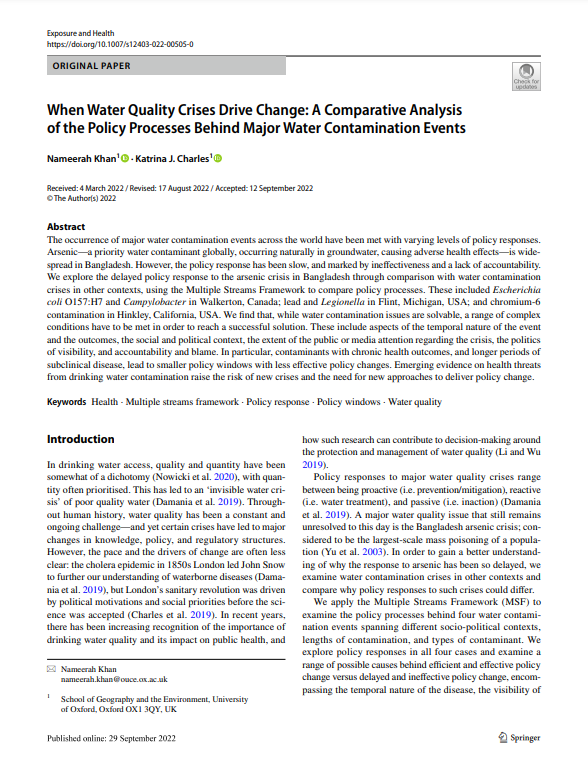Authors: Nameerah Khan and Katrina Charles
The occurrence of major water contamination events across the world have been met with varying levels of policy responses. Arsenic-a priority water contaminant globally, occurring naturally in groundwater, causing adverse health effects-is widespread in Bangladesh. However, the policy response has been slow, and marked by ineffectiveness and a lack of accountability. We explore the delayed policy response to the arsenic crisis in Bangladesh through comparison with water contamination crises in other contexts, using the Multiple Streams Framework to compare policy processes. These included Escherichia coli O157:H7 and Campylobacter in Walkerton, Canada; lead and Legionella in Flint, Michigan, USA; and chromium-6 contamination in Hinkley, California, USA.
We find that, while water contamination issues are solvable, a range of complex conditions have to be met in order to reach a successful solution. These include aspects of the temporal nature of the event and the outcomes, the social and political context, the extent of the public or media attention regarding the crisis, the politics of visibility, and accountability and blame. In particular, contaminants with chronic health outcomes, and longer periods of subclinical disease, lead to smaller policy windows with less effective policy changes. Emerging evidence on health threats from drinking water contamination raise the risk of new crises and the need for new approaches to deliver policy change.

